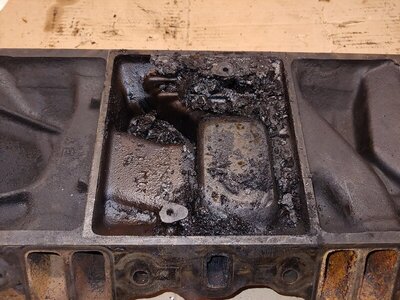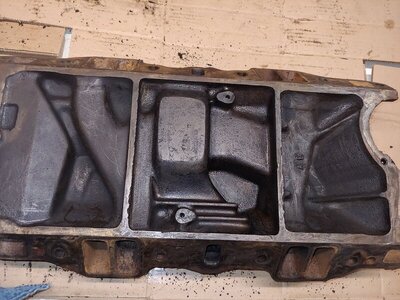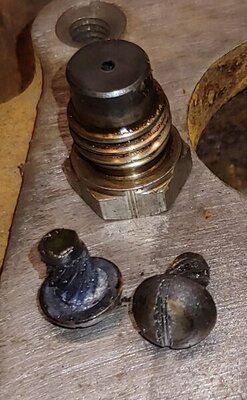John Drake
Member
I am beginning a refurbishment of a cast iron intake from a 1973 340. It needs to be media blasted. I would like to remove the baffle plate from the bottom of the manifold. It's held on by just two blind rivets and was clearly never meant to be removed. It has to come off, however, because there's a ton of carbon chunks coming out from under it and I also don't want any blast media to get caught underneath it. If I grind those rivets off will there be anything worthwhile remaining to connect the plate to upon reassembly?
Also, what are the two nuts doing at the base of the plenum below the primary ports? Mine are pretty rusty and I don't want to hack them up trying to remove them. They don't align with the rivets in the baffle plate. So I'm baffled.


Also, what are the two nuts doing at the base of the plenum below the primary ports? Mine are pretty rusty and I don't want to hack them up trying to remove them. They don't align with the rivets in the baffle plate. So I'm baffled.



















